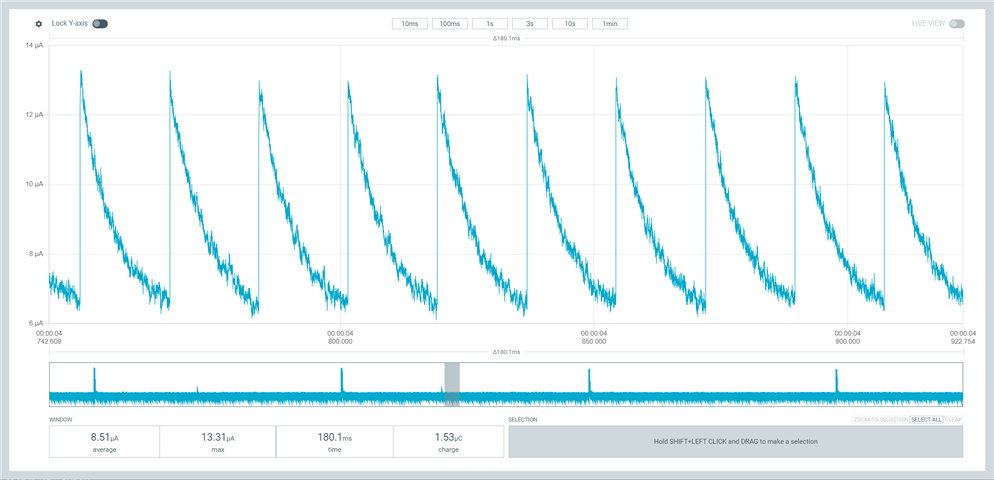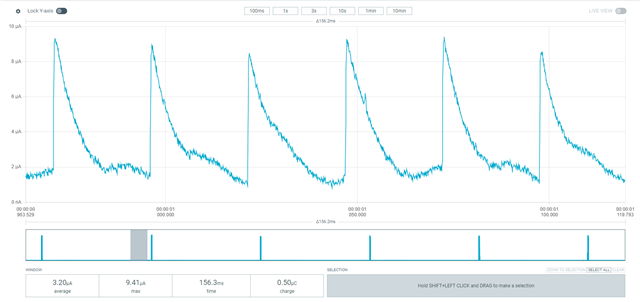Hi there,
Thanks for helping. We are using the nRF52840 DK along with the Power Profiler Kit 2 (PPK2) for power measurement. We are encountering periodic power spikes during the "System ON" sleep mode that do not match the expected power consumption specified in the datasheet. According to the nRF52840 specifications, the current consumption in "System ON" sleep mode should remain stable in the range of 1-3 µA. However, we are observing periodic spikes that reach up to 13 µA, with an average current of approximately 8.51 µA.(Nrf only mode in nordic 52840dk)
Attached is a power profile diagram that illustrates the unexpected current spikes during sleep mode.
Steps Taken:
-
Peripheral Disabling: We ensured that all unnecessary peripherals (such as ADC, TWI, LOG, UART, and GPIOTE) were disabled. We also confirmed that no EasyDMA-related activities were running.
-
Resetting DIF: We reset the Debug Interface (DIF) using both power cycling and the SWD command:
shellCopy codeSWDSelect SWDWriteDP 1 0x04000000 exitThis was done to minimise any interface current on the nRF52840.
-
Sleep Mode Entry: We confirmed that the system is entering sleep mode by using
nrf_pwr_mgmt_run()in the main code. We also enabled a debug pin and monitored pin 31 to ensure that the sleep mode is properly entered (a high signal on pin 31 indicates sleep mode is active). -
GPIO Configuration: All unused GPIOs were configured with pull-down resistors to avoid floating inputs that could draw additional current.
Despite these optimizations, the power profile still shows periodic current spikes with a maximum of around 13.31 µA, significantly higher than the expected flat power consumption during sleep. The system does not appear to be achieving the low power levels we anticipated.
Questions:
- Based on the attached power profile, could you suggest any additional steps we might take to identify the cause of these power spikes?
- Could there be any internal processes, interrupts, or hardware configurations that are leading to these spikes in current during sleep mode?
- Are there specific settings related to GPIO or other peripherals that could be drawing additional power in sleep mode that we might have overlooked?




